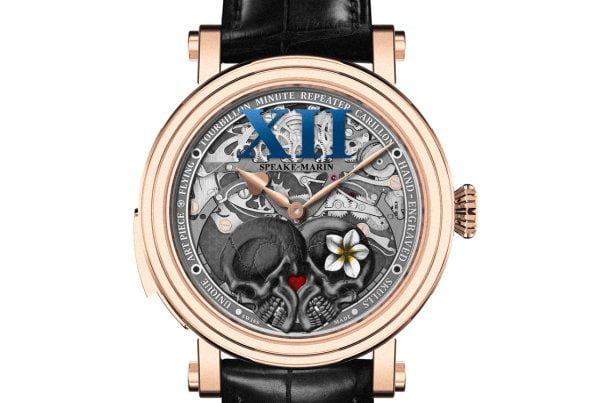
Capturing 5 Elements In A Roger Dubuis Special
This year, famous luxury Swiss watch mason, Roger Dubuis and Italian supercar giants, Lamborghini, have taken their partnership to the next level with the Excalibur Aventador S watch, a limited-run timepiece that re-enacts the five natural elements in Nihon culture. For Roger Dubuis, Japan was both a logical and instinctive choice of location in which to celebrate this partnership with Lamborghini Squadra Corse, as to the bran, it represents a key region for the Manufacture. This is how and why the idea of exploring the themes of ‘water, earth, wind, fire and sky’ are at the heart of this timepiece.
This timepiece comes on the back of Lamborghini Squadra Corse toasting to its 50th anniversary in Tokyo late last year. On the occasion, the Italian marque debuted the launch of the Aventador S Roadster 50th Anniversary Japan: a limited series of five unique cars representing this same five elements as well.
The first is a dark blue shaded version linked with water, and the others will be presented in November this year. So basically, with the five supercars, comes five unique Roger Dubuis Excalibur timepieces that echo the same themes. In fact, in a very exclusive launch affair, a lucky few guests sat down for dinner surrounded by some of Lamborghini’s current engineering icons, including the Huracan Super Trofeo Evo. Does the watch live up to all the hype though?
For starters, it is unique, simply because it is powered by a brand-new calibre that has been co-developed with Lamborghini Squadra Corse. The robust 45 mm C-SMC carbon cases of each model feature design cues drawn from Japanese culture and the inspiration it also provided to Roger Dubuis’ Raging Mechanics partner. This approach involved a powerful personalisation element which presented a similar set of daunting technical challenges for both watchmaking and automobile engineering.
In addition, all the straps reminiscent of Lamborghini Squadra Corse upholstery feature Nero Ade black leather and black Nero Cosmus Alcantara, as well as the Y symbol for bamboo in Japanese culture and stitching matching the colour of the exterior. Just as on the cars, the calibre is characterised by a hexagonal carbon plate with the calligraphed Japanese symbol of its elemental namesake.



































